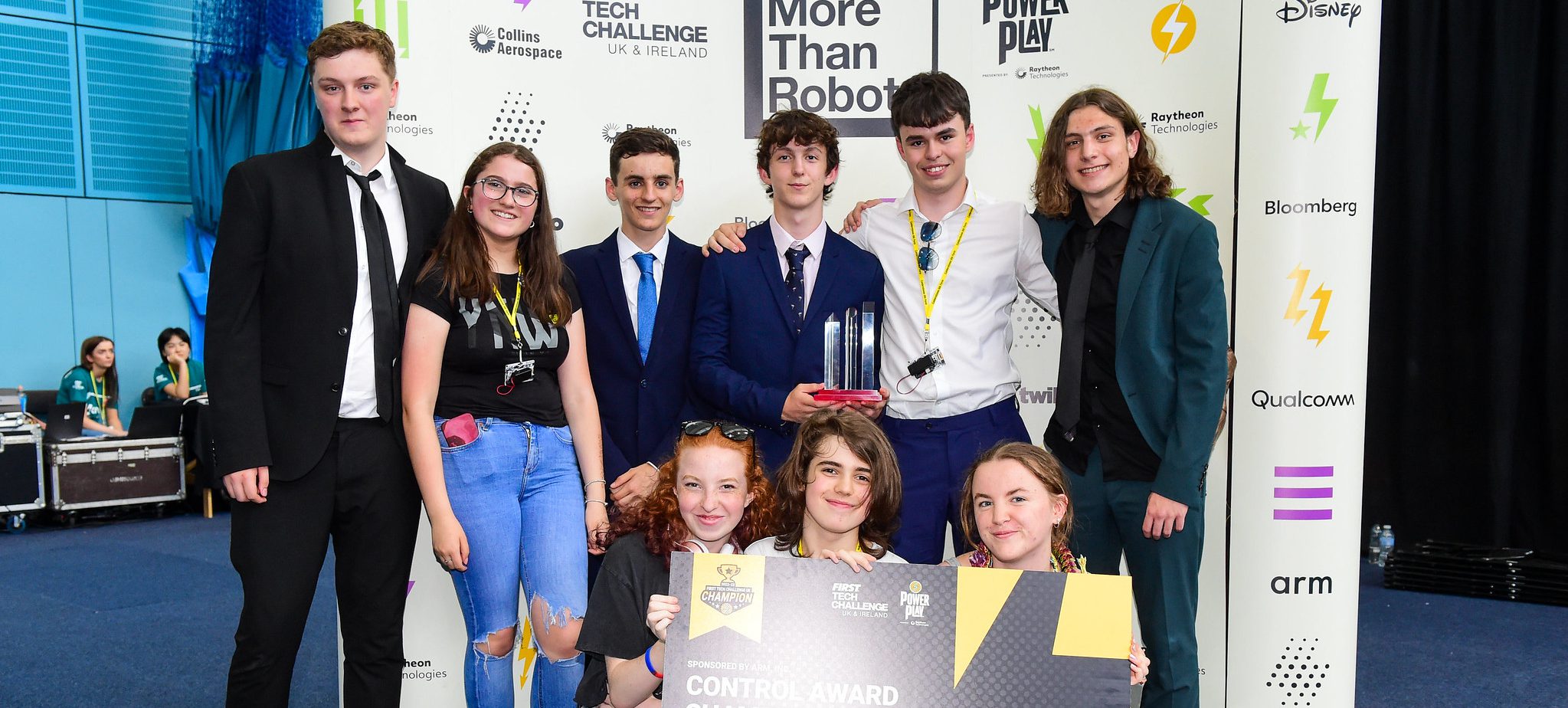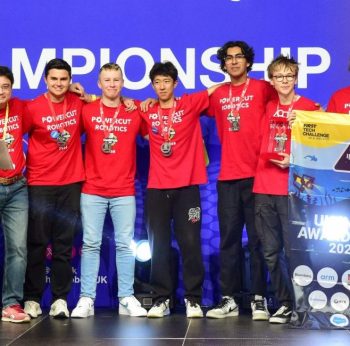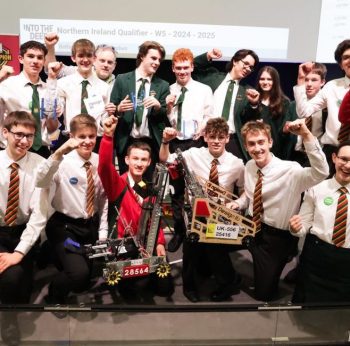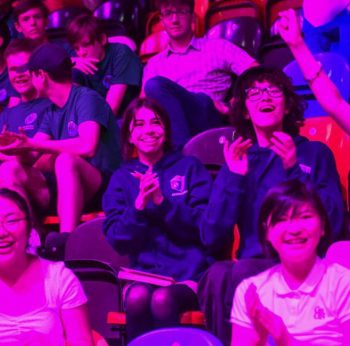
Team CalderDrones spills the beans on creating an award-winning game-day strategy
At our recent teams webinar focused on all things Qualifying Tournaments, CalderDrones, 2022-23 National Innovate and Regional Control Award winners, from Liverpool, shared what makes a winning game-day strategy with some top tips to get UK teams fired up for game day. Let’s recap on the genius gems shared with teams:
Team Name: CalderDrones
Team Number: 21024 / UK-068
School: Calderstones School
Hub region: North West
Years of Participation: 5
Awards last season: Regional Innovate Award sponsored by Raytheon Technologies, National Championship Raytheon Technologies Division Winning Alliance, National Championship Control Award Winner Sponsored by Arm Inc.
Social Media: Follow CalderDrones on Instagram @calderdrones
Control Award
The Control Award is often overlooked in the pursuit of more prestigious prizes such as the Inspire Award. Investing some time trying for the Control Award can pay dividends across the competition, though. A team with a strong performance in the autonomous period starts the driver-controlled period with a points advantage, and last year we found this meant our alliances ended up beating teams that out-performed us under driver control.
You can also use clever algorithms to make your drivers’ lives easier. In last year’s game we used PID Control and some preset positions so that our robot could pick up cones and raise them to exactly the right height each time, which makes for much faster and more consistent performance than trying to position things manually.
Not to mention that discussing your algorithms can make a really strong contribution to your engineering notebook – absolutely key to winning several other awards – clearly the Control Award is worth aiming for!
Autonomous Strategy
Our approach to the autonomous period focuses on doing the basics well. It’s much better to have an autonomous op-mode that reliably scores points every game than a “diva” that sometimes shines but frequently goes wrong.
Developing software always takes longer than you expect it to, so we like to start with a “minimum viable product” – the simplest autonomous that scores points – and only add features when we’re certain that our current algorithms are working well. For CENTERSTAGE we’re initially focusing on getting an algorithm that can reliably drive our robot to the backstage area and park. Ultimately this has to work equally well on the Red and Blue alliances and from all four starting positions.
Once that’s working well, additional functionality could be bolted on. We’re planning on first trying to correctly place our pre-loaded purple and yellow pixels using the location of the white indicator pixel. If we get that working, the next step would be to see if we can recognise our own team prop instead. Finally, our stretch goal would be to add the ability to collect additional pixels from the stacks and place them on the backdrop. We almost certainly won’t get all of this working, but by progressing towards this goal in a logical manner we can ensure we achieve as much as we can
A few programming tips
It’s a really good idea to use some sort of version control for your code; it’s all too easy to break a previously-working algorithm when adding new functionality and it’s helpful to be able to just revert to the last known-good version when you mess things up!
Back up your code, especially if you’re using on-bot java or block-based programming. If you don’t, Murphy’s Law says your Control Hub will choose to reset itself on the morning of your tournament and lose everything. Ask us how we know!
If you’re getting into some serious java programming, take a look at the libraries other teams have written. Road Runner has some excellent tools for localisation and path-following, and this can be combined with tools like Meep Meep or Road Runner GUI to plan your robot’s moves during the autonomous period.
Driver-Control Enhancements
The Control Award is not just about the autonomous period; you can also use algorithms to make it easier to score points in the driver-controlled period and end game. Here’s some ideas we’ve been floating for driver assists for this season:
- Use a webcam to read the AprilTags on the backdrop and automatically position the robot for optimal scoring
- Program the lift/arm with preset positions so that pixels can be dropped in exactly the right place (ideal for making mosaics)
- Sensors and code to count how many pixels the robot has in its possession and spit out any extras
A routine to perfectly place the robot in the optimal position for launching the drone
Documentation
It should go without saying, but somehow each season we forget! Document everything you do! In the last panic-filled days putting together your engineering portfolio you’ll be really glad you took a photograph of that flowchart, or kept that early version of your code. Also, if your code is well documented it will be easier for new additions to your team to understand and make contributions. As some of our older members are finding, at some point you’ll have to move on from your team to make way for the next generation of budding engineers, and leaving behind a bunch of well-structured and clearly documented code is an excellent legacy!



